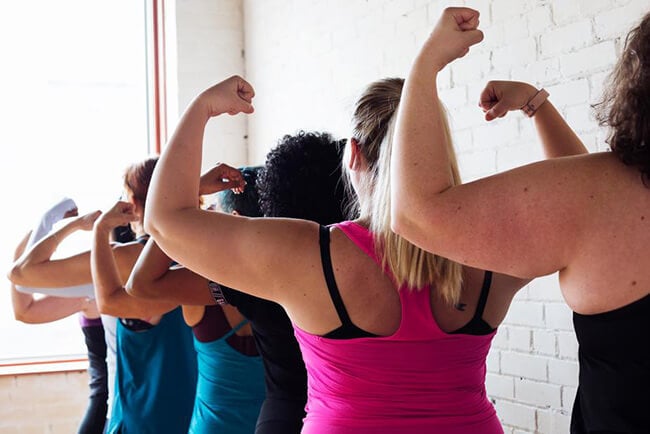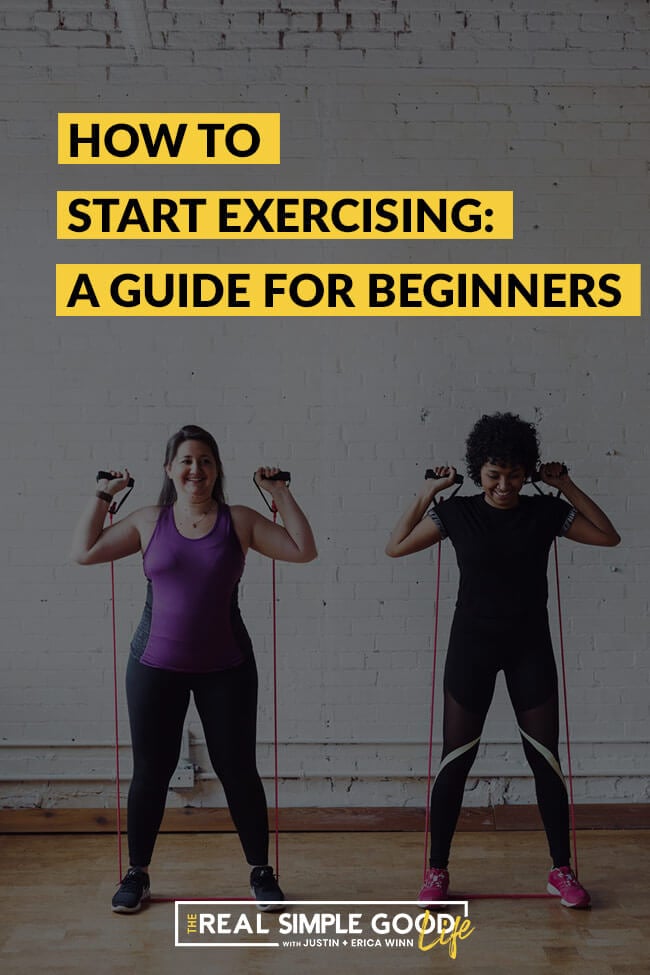First, slow your roll
Every year in January, gyms are packed, group fitness classes are full, and people are buzzing with that “new-year energy”. Like clockwork, those resolutions fail and things are back to normal in February. So how do you buck that trend? Start slow. Instead of going “all-in” on exercise and burning out after a few “hard-core” sessions, it’s better to start slow. No matter what exercise you choose, don’t go from couch to 60 minutes of exercise without rest your first day. It just won’t work.
Take a gradual approach
The easiest way to slow yourself down and create a sustainable exercise habit is to take a gradual approach. By easing into longer bouts of exercise gradually, you will allow your body to adjust and get some easy “wins” under your belt. These “wins” will translate into momentum and start developing into a habit. An example of taking a gradual approach:
Starting with just 10-15 minutes of light exercise for 3-4 days your first week (walking, body weight exercises, yoga, etc.). Just something to get moving and your heart pumping. Gradually increase your exercise duration by 5 minutes every 2-3 weeks.Add in some higher-intensity exercises after the one-month mark. These can be short bursts (30 seconds to 1 minute) of intensity within your longer exercise session. Examples are walking uphill, jogging, squat jumps, etc. If it’s sustainable for you, at the one month mark you can also add in an extra day of exercise.
After 6-8 weeks, you should be up to 30 minutes of exercise 3-5 days a week with short bouts of intensity mixed in. It all started with a 10 minute walk, see how that works?
Set Realistic Expectations
How to start exercising in a sustainable manner can all be framed by setting realistic expectations. You can’t go from couch to running a marathon in a month, it’s just not realistic. Here are some questions to ask yourself to help frame and set your expectations for your new exercise routine.
What are my goals?How much time can I realistically dedicate to exercising each week?What long-term benefits do I seek?What is my current level of fitness?Have I exercised consistently in the past?Why have my previous exercise routines failed?Do I need to account for my age or any injuries (or injury risks)?
Answering these questions will help you to see if your expectations are realistic or out of whack. For example, if your goals are too ambitious (like wanting to lose a pound a week), that’s just not realistic. Really take some time to dig into these questions and consider how realistic your current expectations are. Setting realistic, achievable expectations will not only keep you on track, it will help keep you motivated. No one likes to set lofty goals and fail. That’s why most people fizzle out in the gym by February each year. They expect results to show up and happen overnight, and that’s just not how it works. Achieving your goals will take consistency over time and hard work.
Eliminate Obstacles
When you first start exercising, you are developing a new habit. You need to set yourself up for success and make it easier to execute the plan you have for yourself. It is key to eliminate obstacles that might derail you from getting to your “intended” exercise session. Some advice for eliminating obstacles and excuses:
Schedule each planned exercise session on your calendarTell others (family/friends/co-workers) about your new exercise routineSchedule a group exercise classSet out your workout clothes the night before or pack your gym bag to take with you to workDevelop a mantra – your “why” that you can remind yourself about when you don’t feel like exercisingFind an exercise you enjoy (or at least don’t hate)
Ultimately, your goal is to minimize the things that could get in the way of your exercise goals. But when things do get in your way – and inevitably they will – try to get over it as quickly as possible and refocus. If you miss an intended workout, class or planned walk during lunchtime – it’s not the end of the world. Just forget about it and make a commitment to getting some exercise in tomorrow.
Take a long-term approach
This is my #1 piece of advice when people ask me how to start exercising. Approaching your exercise routine with a long-term mindset is the key factor in determining how long your new exercise routine will last. No matter what your short term goals are, your ultimate goal should be to create a habit of exercise for life. I’ll say that again. Exercise for life. Utilizing this long-term mindset will help you overcome minor setbacks in your exercise routine. There will be setbacks – count on it. Count on days you will miss workouts, days you won’t eat as healthy as you intended, and days all of your good intentions go off the rails. You will likely experience weeks or months that don’t go as you intended. Don’t beat yourself up over it. Don’t fizzle, get down on yourself or completely call it quits over some minor setbacks. If your mindset is focused on a goal of exercise for life, all setbacks are minor. You can always get back into an exercise routine, no matter the circumstances. Forgive yourself if you need to, and keep moving forward. Always remember that you’re in this for the long run.
How will you start exercising?
What are your goals and intentions for your new exercise routine? How will you start small, set expectations, eliminate obstacles and take a long-term approach? Leave a comment below and share your story with us! We can’t wait to hear all about your commitment to live better and exercise for life. You can even tag us in your exercise posts on Instagram #TheRSGLife or @realsimplegood and we’ll help keep you motivated and accountable! Make sure to give us a follow if you don’t already – let’s stay connected! SHARE IT NOW OR PIN IT FOR LATER!




